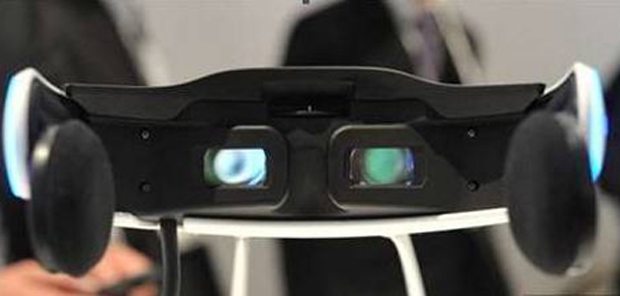If there’s one long-standing fable that the gaming industry has had to endure the rumors and mythic nature of, it’s the idea of virtual reality becoming a feasible practice. Most gaming critics who follow a more realistic approach generally take any new device or developing technology that is marketed through this gimmick with a big grain of skepticism. Truth is, if the tech required to produce a literal virtual reality is in fact in the works, we are more than just a few years away from seeing it. Mick Hocking, one of the big minds at Sony responsible for bringing 3D to the PS3, recently spoke to Develop and admitted that Sony has not yet given up on the vision of a true virtual reality technology.
Discussing a variety of topics relating to the 3D field of study in modern gaming, Hocking stated that 3D could become a commercially viable element that could grow into a standard feature rather than an optional gimmick, often as it is viewed now. He also discussed the issues that Nintendo has seen following the release of the 3DS and the subsequent reports that the handheld has the ability to give players dizziness, nausea, and severe headaches.
Well the main point is that if 3D is done correctly and delivered well by the display device then it is comfortable to watch. But if it isn’t implemented correctly then it can cause effects that make it uncomfortable. There are many things that can be done wrong in 3D, some of them obvious and some of them quite subtle, and its really important for the developers to understand all of these issues when implementing 3D so that they can produce a really good 3D game.
When using autostereoscopic screens they typically have a sweet spot where the viewer needs to be to get the right 3D effect, if the user moves their head relative to the screen too much then this can make viewing the 3D difficult. The poor language on 3D is one of the reasons why it’s essential that the 3D tech is done right and developers only deliver great quality 3D games.
Nintendo has since issued a suggestion to gamers which states that players of all ages should take a break at least every 30 minutes in order to avoid eye fatigue or sickness and players under the age of six should avoid using the 3D feature altogether. Not too bright on Nintendo’s part considering the 3D capability was sort of the selling point (hence the name) of the console, and the company clearly knew that it would be geared toward and played by younger audiences.
Hocking affirmed that although Sony has seen the release of over 50 3D capable games for the PS3, the company isn’t looking to oversaturate the market with games using 3D technology. Instead, Hocking believes it is important to have a smaller selection of quality 3D releases, saying, “I think it’s more about us having a good library of high-quality 3D titles out on the market, and strong support from third parties, so anyone investing in a 3D TV knows that they have a lot of great 3D content to play with on PlayStation 3.”
He then went on to add, “If 3D is delivered well then it will provide a great experience for our games fans. If you look at Motorstorm Apocalypse, Killzone 3 or the new games like Ratchet and Clank: All 4 One, or Uncharted 3 in 3D you will see how much 3D can add to the gaming experience.”
Most significantly, when asked about the idea of Sony creating a virtual reality platform, Hocking commented that through what he has witnessed over the past few years and the technological advancements he has played an integral part in, the concept “certainly seems possible.” He also stated that the head mounts in which Sony is experimenting with incorporate 3D technology and are capable of feeding 3D images directly into each eye.
We’ve also got a new head mounted display that we showed at CES, that can produce really great quality 3D and a very immersive experience for games. The head-mounted display has twin-OLED screens; very high quality. At the moment it’s just a head-mounted display; the head isn’t being tracked – but that’s something we’re doing R&D on. I have to say, what we’ve done in the R&D projects has just been fantastic. We’re working with a couple of games at Sony that are experimenting with virtual reality type experiences.
Those ready and willing to get in line for one of those will surely have to wait a while before they hit retailers. In the meantime, Sony is busy making the final tweaks on their announced Playstation-brand, 24-inch 3D TV which will allow for two people playing on it each to see a full screen image rather than the normal one half on a standard definition TV. If only this invention had been made 10 years ago when my friends and I were playing four player deathmatch in Halo: CE on one crappy, 27 inch analog screen. I might not have had to spend the majority of the game watching my friend’s 1/4 block of screen instead of my own. Ah, the days when the insult of “screen-looker” still packed a punch.











Published: Jul 18, 2011 07:40 pm